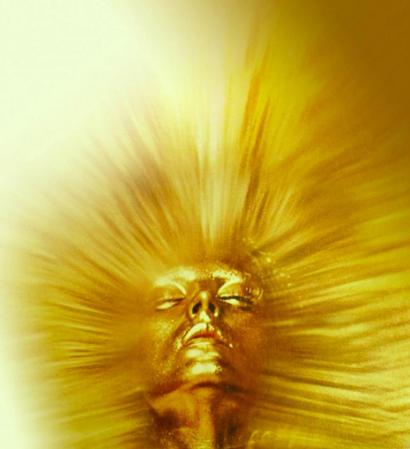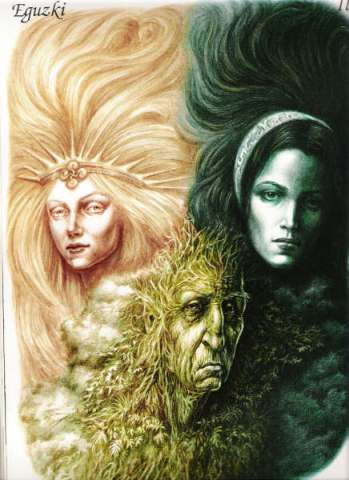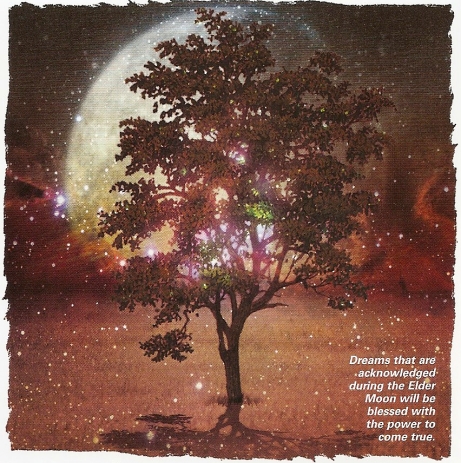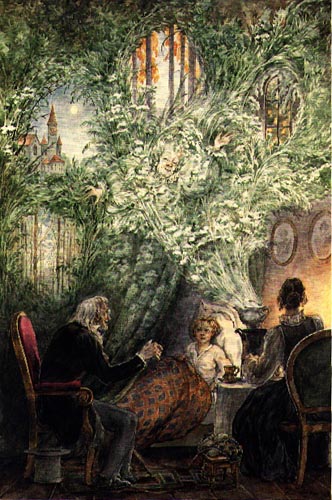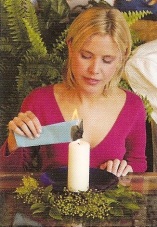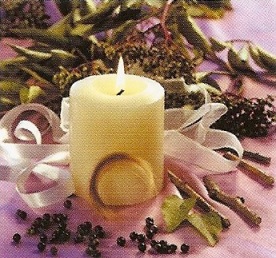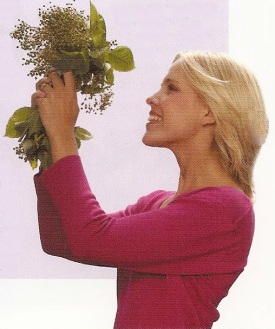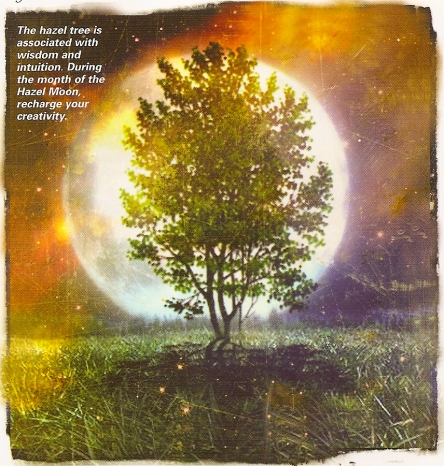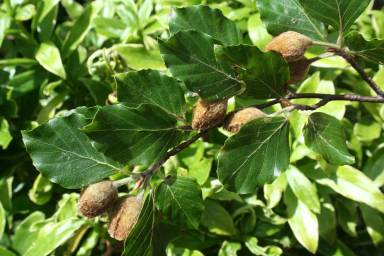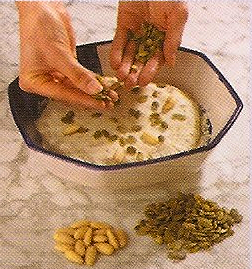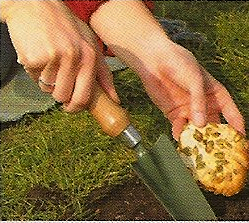
“Ostara” by Asaenath
“Ostara’s themes are fertility and rebirth. Her symbols are eggs. The Teutonic Goddess Ostara presides over personal renewal, fertility and fruitfulness. Now that spring is here, it’s a good time to think about renewal in your own life. Ostara represents spring’s life force and earth’s renewal. Depicted as lovely as the season itself, in earlier writings She was also the Goddess of dawn, a time of new beginnings (spring being the figurative dawn of the year). One of Ostara’s name variations, Esotara, slowly evolved into the modern name for this holiday, Easter.
All spells and foods that include eggs are appropriate today. If you’ve been ill, try an old folk spell that recommends carrying an egg for twenty-four hours, then burying it to bury the sickness.
To improve fertility of all kinds, make eggs for breakfast at dawn’s first light, the best time to invoke Ostara. As you eat, add an incantation like this one:
‘Ostara, bring to me fertility
With this egg now bless my fruitfulness!’
Or, if you’re feeling down and need a little extra hope, get up before the sun rises and release a symbol of your burden to the earth by dropping or burying it. Don’t look at it! Turn your back and leave it there. Turn toward the horizon as the sun rises, and harvest the first flower you see. Dry it, then carry it with you often as a charm to preserve hope in your heart.”
(Patricia Telesco, “365 Goddess: a daily guide to the magic and inspiration of the goddess”.)

“Ostara” by Mickie Mueller
The Goddess Ostara, or Eostre, is the Anglo-Saxon Goddess of Spring, the East, Resurrection, and Rebirth, is also the Maiden aspect of the Three-fold Goddess. She gave Her name to the Christian festival of Easter (which is an older Pagan festival appropriated by the Church), whose timing is still dictated by the Moon. Modern Pagans celebrate Her festival on the Vernal Equinox, usually around March 21, the first day of Spring.
Ostara was an important Goddess of spring to the ancient Saxons, but we know little else of Her other than this. Some have suggested that Ostara is merely an alternate name for Frigg or Freya, but neither of these Goddesses seem to have quite the same fertility function as Ostara does. Frigg, Goddess of the home, wouldn’t seem to be associated with such an earthy festival and Freya’s form of fertility is more based on eroticism than reproduction.
However, Ostara is associated, almost interchangebly, with many different Goddesses. [Again, purely speculation] She is essentially identical to Freya, for She is the Goddess of the fertile spring, the resurrection of life after winter. She was equated with the Goddess Idunna, who bore the Apples of Eternal Youth to the Aesir, and many believe that Ostara and Idunna are the same, or represent the same principle. She is almost certainly the same as the Greek Goddess Eos, Goddess of the Dawn. (Again, following the threefold theme — Eos is the Maiden aspect of the three goddesses Eos /Dawn, Hemera /Day and Nyx/Night.) As Ostara is Goddess of the Dawn, we can understand why sunrise services have always been an important aspect of the spring resurrection/rebirth observances of other cultures.
Eggs and rabbits are sacred to Her as is the full moon [though there is no historical record of this], since the ancients saw in its markings the image of a rabbit or the hare. Pagan Anglo-Saxons made offerings of colored eggs to Her at the Vernal Equinox. They placed them at graves especially, probably as a charm of rebirth. (Egyptians and Greeks were also known to place eggs at gravesites). The Goddess of Fertility was also the Goddess of Grain, so offerings of bread and cakes were also made to Her. Rabbits are sacred to Ostara, especially white rabbits, and She was said to be able to take the form of a rabbit.
One myth says Ostara found a bird dying from the cold. She changed it to a rabbit so it could keep warm. Maybe this is why the Easter Bunny brings eggs to children on Easter. Traditionally German children are told that it is the Easter hare that lays all the Easter eggs. [1][2]

“Ostara” by Helena Nelson-Reed
“Part of the story of the Easter bunny is excerpted below, but you can use this link to read the complete version of Easter History and Traditions, including the stories of the Goddesses, at the website: Easter History and Traditions
The Goddess Ostara and the Origin of the Easter Bunny: A Modern Neo-Pagan Tale
Ostara, the Goddess of Dawn (Saxon), who was responsible for bringing spring each year, was feeling guilty about arriving so late. To make matters worse, She arrived to find a pitiful little bird who lay dying, his wings frozen by the snow. Lovingly, Ostara cradled the shivering creature and saved his life.
Legend has it that She then made him Her pet or, in the X-rated versions, Her lover. Filled with compassion for him since he could no longer fly because of his frost-damaged wings, the Goddess Ostara turned him into a rabbit, a snow hare, and gave him the name Lepus.
She also gave him the gift of being able to run with astonishing speed so he could easily evade all the hunters. To honor his earlier form as a bird, She also gave him the ability to lay eggs (in all the colors of the rainbow, no less), but he was only allowed to lay eggs on one day out of each year.
Eventually Ostara lost Her temper with Lepus (some say the raunchy rabbit was involved with another woman), and She flung him into the skies where he would remain for eternity as the constellation Lepus (The Hare), forever positioned under the feet of the constellation Orion (the Hunter).
But later, remembering all the good times they had once enjoyed, Ostara softened a bit and allowed the hare to return to earth once each year, but only to give away his eggs to the children attending the Ostara festivals that were held each spring.” [3] Again, there is no historical documentation or lore that states this and I really have no idea where the tale originated from.
Variant spellings: Eostra, Eostrae, Eostre, Eástre, Austra [4]
Sources:
Ashliman, D.L. The University of Pittsburgh: German 1500: Germanic Myths, Legends, and Sagas, “Ostara’s Home Page: The Germanic Goddess of Springtime“.
The Goddess Gift E-zine, “The Goddess Ostara and the Easter Bunny: The Art of Renewal“.
Took, Thalia. A-Muse-ing Grace Gallery, “Eostre“.
Yvonne. Earth Witchery, “Ostara or Eostre“.
Suggested Links:
Aloi, Peg, Witches’ Voice, “You Call It Easter, We Call It Ostara“.
The Blue Roebuck,”Eostre“.
Cavalorn. Cavalorn.livejournal.com, “Eostre: The Making of a Myth“.
Fox, Selena. Circle Sanctuary, “Ostara Meditation“.
Goddess E-zine, “The Goddess Ostara, the Easter Bunny, and Their History in Easter Tradition“.
Goddessgift.com, “Goddess Ostara: History of Easter Eggs, History of the Easter Bunny, Goddess Ishtar and the First Resurrection“.
Goddessgift.com, “Ostara (Oestre): Saxon Goddess of the Dawn and Spring“.
Love of the Goddess, “Ostara, Celebration of the Goddess of Spring.”
Revel, Anita. igoddess.com, “Eostre: walk with a ‘spring’ in your step“.
Wikipedia, “Ēostre“

